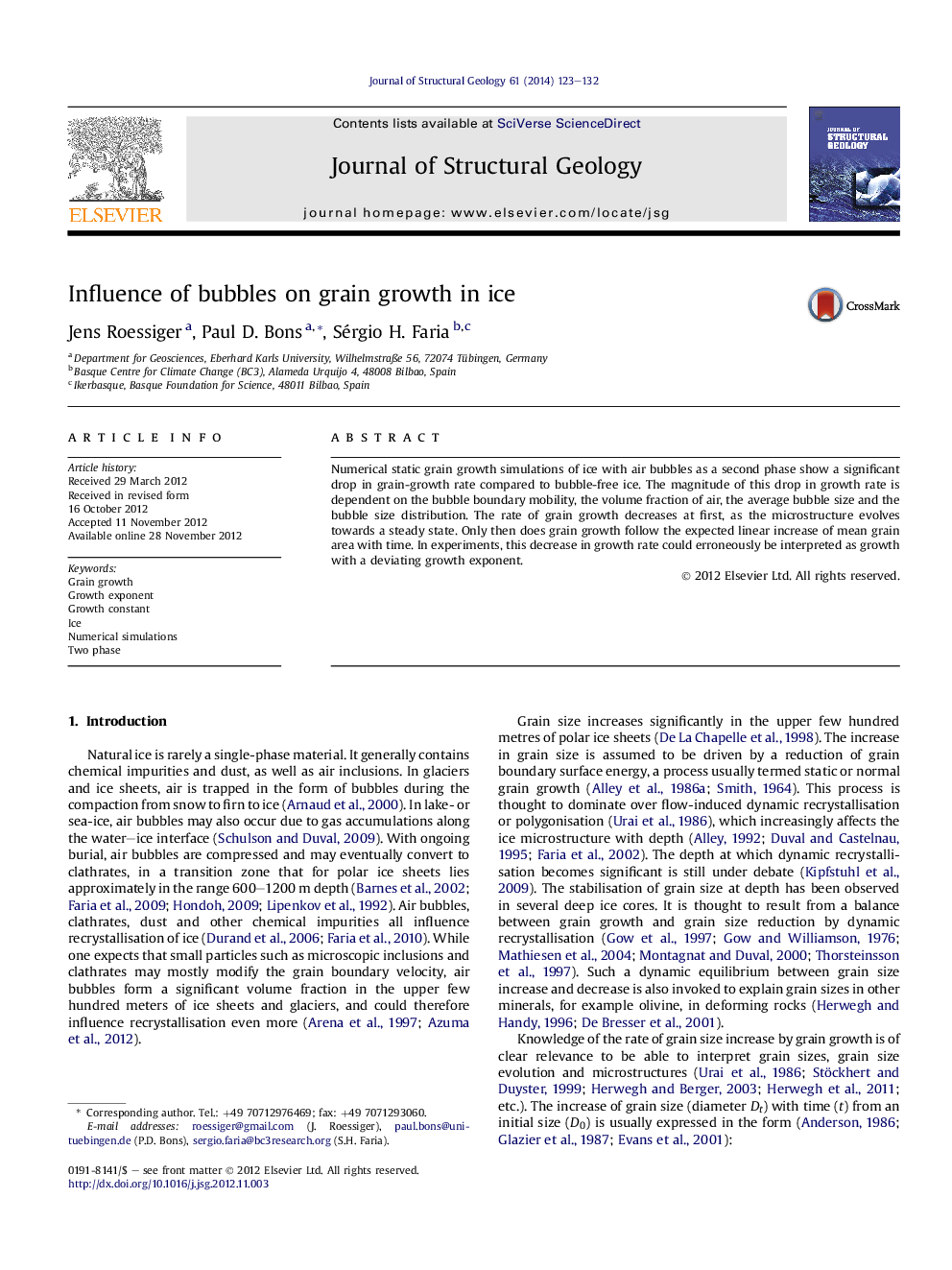| Article ID | Journal | Published Year | Pages | File Type |
|---|---|---|---|---|
| 4733035 | Journal of Structural Geology | 2014 | 10 Pages |
Numerical static grain growth simulations of ice with air bubbles as a second phase show a significant drop in grain-growth rate compared to bubble-free ice. The magnitude of this drop in growth rate is dependent on the bubble boundary mobility, the volume fraction of air, the average bubble size and the bubble size distribution. The rate of grain growth decreases at first, as the microstructure evolves towards a steady state. Only then does grain growth follow the expected linear increase of mean grain area with time. In experiments, this decrease in growth rate could erroneously be interpreted as growth with a deviating growth exponent.
Graphical abstractFigure optionsDownload full-size imageDownload high-quality image (354 K)Download as PowerPoint slideHighlights► We modelled two-phase 2D microstructures with high dihedral angles (ice + air bubbles). ► Influence of interface mobility, bubble fraction and bubble size on grain growth in ice. ► Implications for interpretation of grain growth data and growth-law fitting. ► Microstructural evolution should be considered in deriving grain-growth laws.
